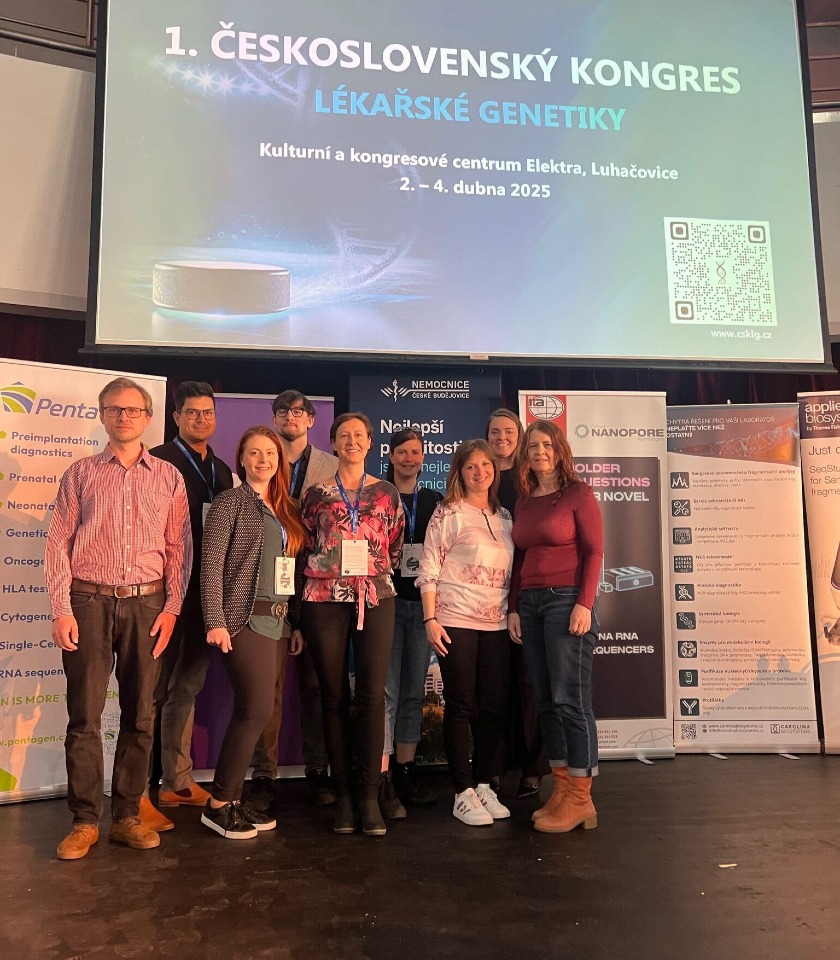
The first year of the Czechoslovak Congress of Medical Genetics took place with our active participation.
On 2-4 April 2025, the first ever Czechoslovak Congress of Medical Genetics took place at the Elektra Cultural and Congress Centre in Luhačovice. This new platform builds on the long-standing cooperation of Czech and Slovak experts in the field of medical genetics and was created by combining two traditional events - the Martin Genetics Conference and the national DNA diagnostics conference.
The congress was well attended by experts from both countries and offered a rich professional programme, which included contributions from our colleagues. In total, there were 5 lectures from the team of GHC GENETICS SK, GHC GENETICS CZ and PRENET.
We would like to thank the entire author team for representing our companies and contributing to the expert discussion. We believe that the Czechoslovak Congress will become a regular platform for knowledge sharing and interdisciplinary collaboration.
At the congress we have planned the following topics in the form of lectures:
Celoexome analysis of genetic diseases of bone remains from the period 1850-1930.
Authors: R. Michalovská, L. Hrušková, H. Paszeková, V. Krulišová (GHC GENETICS), I. Mazura (1. LF UK a VFN), V. Smrčka, Š. Tonar (1. LF UK), V. Kuželka (National Museum Prague)
One of the largest European anthropological collections is stored in the National Museum in Prague's Horní Počernice. This collection contains skeletal remains of the population of Prague and Central Bohemia from 1850-1930. These specimens from the Second Pathological and Anatomical Clinic of the Faculty of Medicine of Charles University were originally used for teaching medical students. The exhibits show how serious diseases such as syphilis, tuberculosis or rickets, which were not treated at that time, developed. Some selected slides show possible indications of congenital genetic diseases of the musculoskeletal system. For example, short stature, brachydactyly with ulnar or radial deviation of the toes, short legs with marked hip dysplasia. These samples were subjected to DNA isolation and analysis by whole exome sequencing. The aim of the project is to provide a detailed analysis and description of possible genetic diseases.
Newly described splice variant gene FGFR3 in patients with hypochondroplasia and achondroplasia.
Authors: Krulišová Veronika (GHC GENETICS), Zemková Daniela, Mařík Ivo, Paszeková Helena (GHC GENETICS), Michalovská Renáta (GHC GENETICS), Vlčková Zděnka (GHC GENETICS)
Reclassification of clinically unclear variants found in individuals tested for hereditary cancer syndromes: current knowledge and practice
Authors: Spurná Z., Panchártek D., Hniličková I., Schwarz M., Fišer M. (PRENET - prenatal diagnostics and genetics, Pardubice)
This lecture points out that with the growing knowledge of the nature and function of genes, it is necessary to regularly review and update the results of genetic testing.
Challenges and limits of DNA testing for paternity and other relationships, "or even a broken clock tells the right time twice a day"
Authors: Baldovič M., Laboratory of Genomic Medicine, GHC GENETICS SK s.r.o., Bratislava; Department of Molecular Biology, Faculty of Science, Charles University, Bratislava
Parodontitis as an inappropriate family inheritance
Authors: Konečný M., Laboratory of Genomic Medicine, GHC GENETICS SK

